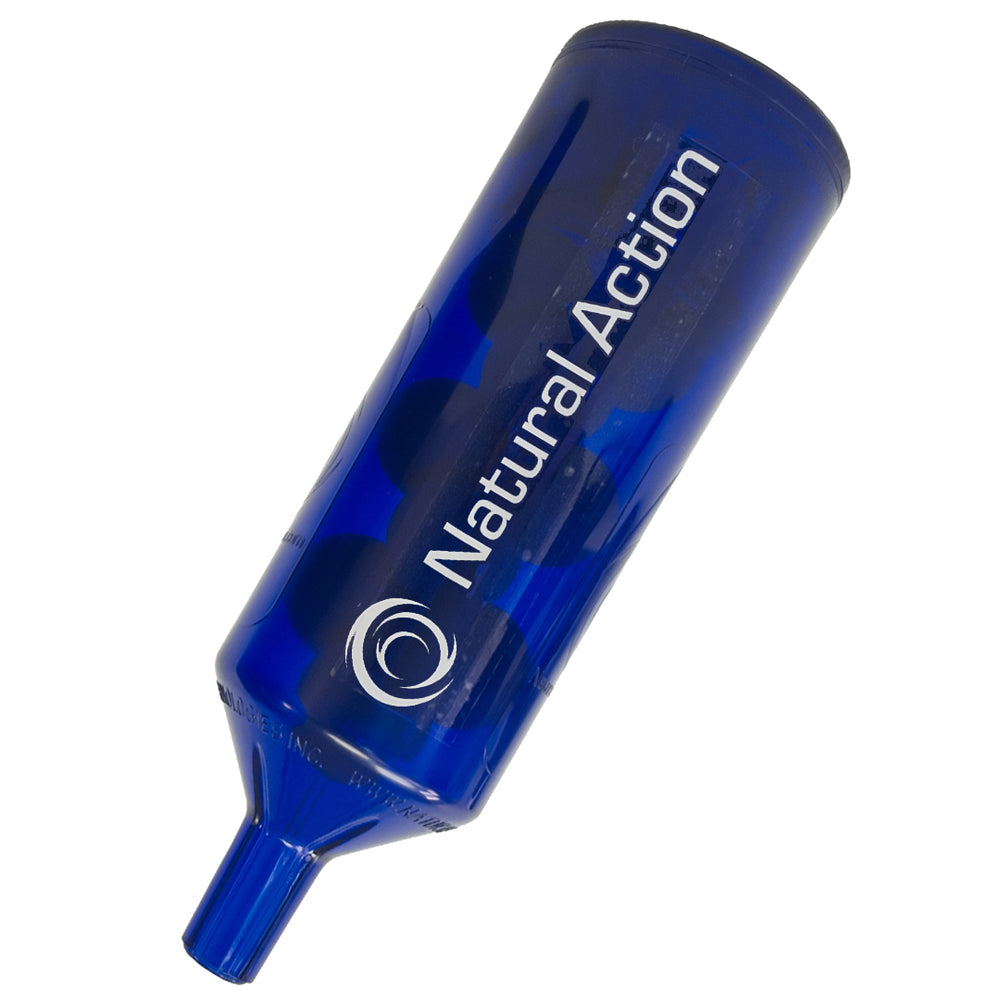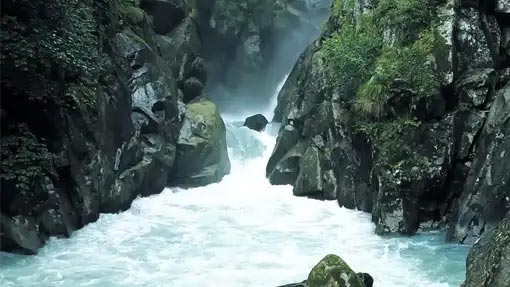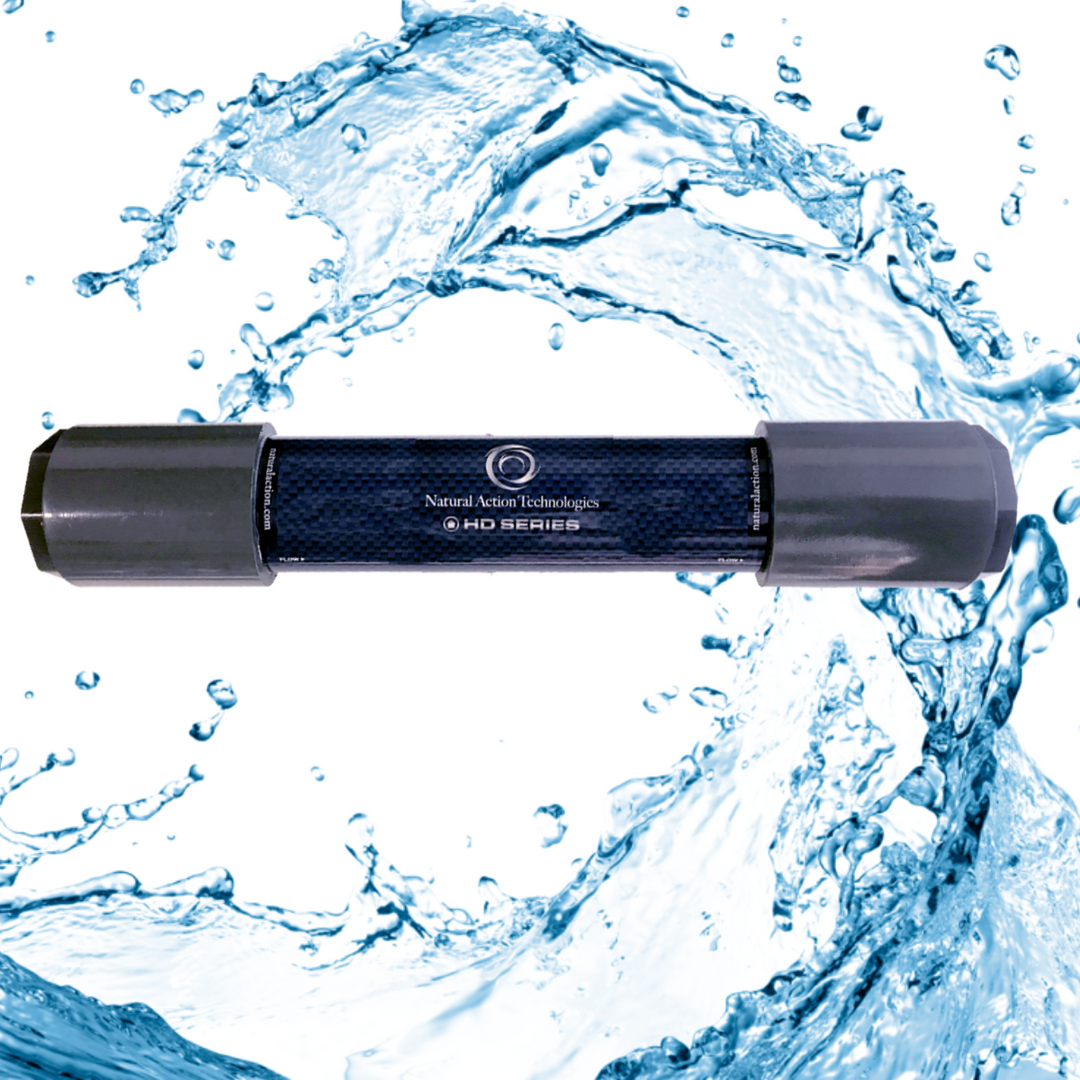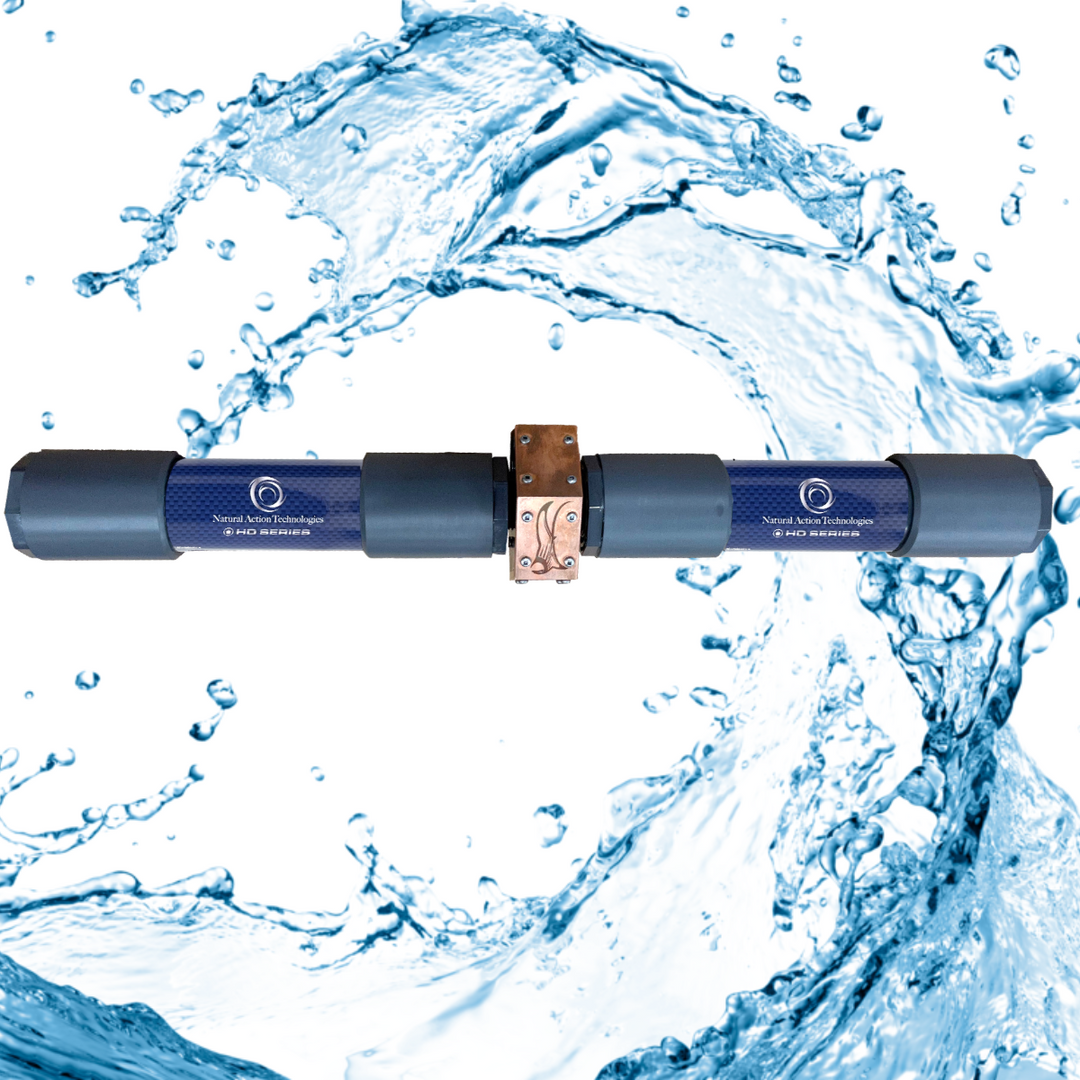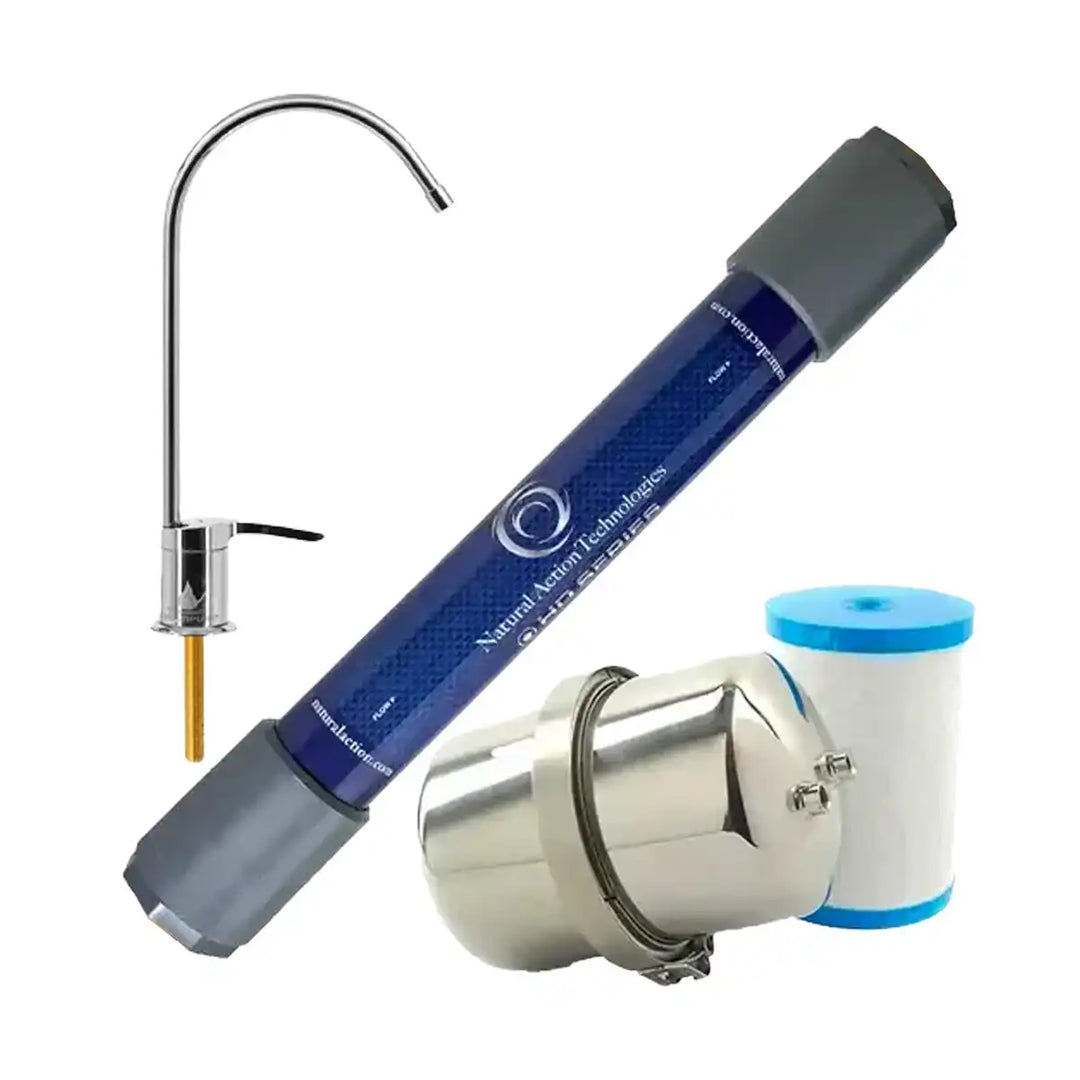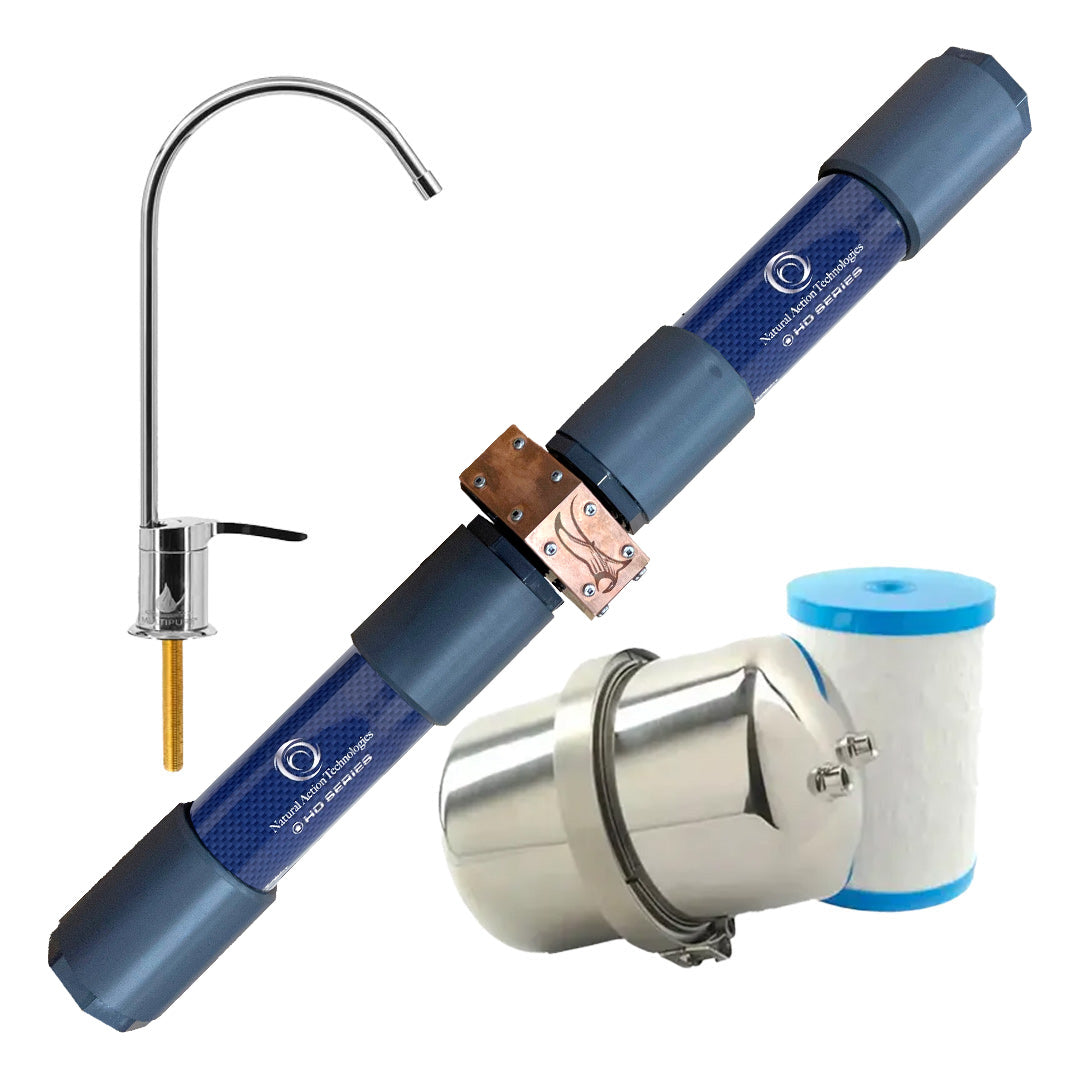In an interview with Katie Wells, the Wonderful WELLNESS MAMA, she asked the following question to Jonathan Butts.
Can you explain what is happening in that system in my house and what it's doing to the water?
Jonathan: Sure. I'll start with straight pipes versus how water flows in nature. It flows most vigorously in the left, right and tumble pattern in the mid mountain stream where it has the most balance of minerals and history or an inertia of flow.
Another thing is important to recognize that if I drop a pebble, even in a river, the whole river knows that that pebble got dropped in because there's a solid.
Let's use the human analogy. It's a simulation, but it's the opposite. You can tell when you're cutting your hair in the mirror when you hold the scissors that your body is watching the mirror. And the signals are backwards, you have to realize this reflective side of it. And so what we're doing is picking the part of the river where we can sense, through science (scientifically repeatable) and observation (more intuitive).
Like as a fisherman standing on the water all day, you start to see little things. I was a fishing guide out west and got to experience where I could drink right out of that water and I could tell that water was alive, vigorous and good for you. And I remember filling up canteens so I could take it back with me because that water was special and it was not easy to get to. So that's what we're trying to simulate. And the longer you do that for, the more you get. But more is not always better.
Over the years we tried to find the right length for the average American home that is using tap water. We not only questioned what are they not doing back at the plant but also what happens through the pipes along the way. And how can we simulate nature and intensify this coming into the home? Not quite as good in the total sense of what a mountain stream does, but sometimes we can get more energy out of it than nature would have.
For 13 years we've worked on finding this balance point. The more we understand the higher level or broader level of awareness with the water, the broader level of knowledge, intuition and emotional stability, it reflects back to us.
One is the flow mechanic, Viktor Schauberger. In my opinion there's nobody close to him as far as crossing the bridge between nature and the mystery and science of how the universe works. It sounds like foreign language when you first read it because we're programmed backwards. He basically said implosion we don't use. And ironically enough, in all my studies I was always interested in the vacuum or bringing things, pulling things together, not the force of pushing things along. And I'll use the analogy of what we do with the water. What convention tries to do in order to treat the water is take a string and push it. What we are always trying to do when we treat water is pull on the string until it straightens out. And what that means to me is the focus and the intention is all aligned and it's leading. The goal is leading, right? You're pulling the string so the pull forces. Your fingers holding the string are leading the motion and then we can get behind it with the other hand and just lightly push. But if we ever push too hard, this thing crumples. What you have in all of life is a pushing, pulling alteration that's led by pulling or self -organization. We're self-organizing the water through this vacuum principle and breathing the water as well as spinning it to the left and the right by winding it together.
Most people are picturing a vortex as something like in a blender where we rotate it in one direction and that's a monopole, what you would call a single direction. Whereas in nature both the left and the right turn in the river is always occurring and there's a point in the middle which the water winds together. We're doing that in a whole home unit 48 times while simultaneously creating vacuum, creating pressure, creating a slightly higher magnitude of vacuum than the pressure because the pressure is just what we have. When we pull negative, we're way ahead of it and that helps everything pull on the string and fall in line, because there's room to fall in line. It's very simple when you look at it.
There's room for everybody to walk through the door as long as we all don't try and go at once and we get in line and flow. A big crowd can narrow down and flow through, that's the same way a vacuum forms in nature or in mechanical engineering.
The second aspect is we try to amplify and simulate some of the stronger reactionary elements that the water flows through and over, similar to the rocks in a mountain stream. And we use slightly spherical shapes, more like a walnut shape, so it encourages the water to fold inward. The walnuts go out on the walls and that stops the water from trying to take its juvenile pathway, which is the line of least resistance, and just go around it without changing. We encourage this water to tumble inward and wind around itself. We do that with shungite, which is a form of carbon just like the Earth, so it represents the ground in many ways. And then it has bucky balls or fullerenes, which is called C60, a natural version that's made by Earth. It's very rare. You can buy C60 supplements, but those are made in a laboratory. This is made up on the North Pole, north of Russia.
So we have a very unique recipe of a type of grounding earth, maybe a futuristic type of carbon that we learn how to breed in the soil. When we get better with the soil, we might see more carbon 60 form. We use North Pole aspects and paramagnetics. And this graphite with the bucky ball in it is what we would call paramagnetic, which means it's attractive in its forces. It's the part of a magnet that would suck up another magnet, not the part of a magnet that would repel and that's what the Earth is.
In a way, that is representing another big natural grounding point. And then we use the next octave, which is silicon. And we use a very unique form of silicon crystal that's from an ancient quartz from old sea beds, and it has like a DNA. We only use one type and we insist on very high-quality control with the signature type and method. We're using about every trace element that exists that is also found in the shungite. We don't remove that.
That brings us our maturity level, where we have this full bandwidth mineral that the water can read during the 48 flow over and simultaneous double vortexes. And that's how it works. That's as simple as it is. Once this happens, it stays in the water for a while. But all the same things that degraded the water before will degrade the water again, but the water will have more resistance to it.
If we flow for 300ft down a straight pipe, we might retain 95% of the holistic water improvement that we've achieved. If we go 1000ft, it might be down to 60%. If we go a mile, it might be down to 15 or 20% energetically of what it was before. Some of the physical things are fairly permanent and take much longer to get rid of some of the physical changes that happen within the water, to the elements.
So in a nutshell, those are the attributes, whether we're using magnets, dielectrics, gold or ormus, all these different materials we could use to influence the water.
In the end, we're just completely simulating what a river does and this inertia that's in the water lasts and makes it to your drinking faucet. We didn't recommend filters in the past. Then I realized people couldn't get over the material side. There are filters that improve things on this hand, but take away on the other hand and there are filters that are just bad, period. Don't ever use them, no matter what, because they just start leaching out concentrated toxins.
Like everything breathes, right? So a filter breathes, it might breathe once a day where it releases a bunch of toxins, and then we happen to drink those at sunset. And then we start to get headaches or start to and now we're balled up in this whole journey of low-quality filtration.
We try and fix that by saying put the whole home unit after to minimize the negative effects of the filters. And then we started studying pressed carbon block filters, that's a higher form of carbon. It's graphite. It's being made similar to a diamond. Exception to the rule, extreme pressures for a long time, like I've said, cause things to aggressively rebound against them. Diamonds are formed under extreme pressure. That's how these filters are made. And what it does is the carbon rebuttals with an increase in its structure to resist the pressure.
In other words, like, if you do try and beat something up for long enough in nature, it will evolve suddenly into something that's way stronger. Which is something we should think about when we're working with pathogens, is that if we attack them too hard, they're going to evolve to a more efficient form. And then we'll just have to learn how to attack them better again. We need to stop that life cycle and learn how to work with them. And the same thing, human to human, we need to stop, like, physically fighting and stop creating this over material world and look at these energetic principles.
The high-quality filter could be put after and not degrade the water. We started selling those filters and allowing them to go after our units as an overall water quality program. It worked out that way in our whole home solutions, where your drinking water is filtered after it's structured, the quality maintains in the ways we measure it in the lab, with crystallography and UV spectroscopy, the water still has good quality. And the way the carbon block filter works, the pressed carbon block spreads things out as much as possible. It's the only filter, in my opinion, that copies how nature does things, that is the total journey compromise we came up with at this point. And there are other filtration forms that are okay, we can't afford to test them all.
But the one to avoid is the charcoal carbon, because that's a burn process, a destruction process that carries an inertia. And that manufacturer process is not as well controlled as they sell to everybody in the filter world. So that's the one I would avoid and the one in history I've always had to remove out of any system after a couple of weeks for loss of water quality, even when we structure afterwards.
The practical is to copy that river, use the highest quality elements as possible. And that's part of the consciousness, right? When you use Shungite and you look at the history of Shungite and water, you're saying, I realize that water musically responds to carbon six hydrogens. The hexagon makes carbon if we get atomic with it. And that's just a simple thing, a tool, it's an intuition, it's a consciousness. And going down that journey and finding out for yourself is what you do to see what's right.
And the good thing is there's all sorts of different ways to program water, to influence water. You can find what crystal you like and place that underneath your water. Typically, the point is what brings life forward and the dull end or the South Pole, from a magnetic perspective, is what slows life down. Sometimes you need to slow down, so learning how to use these tools is important. We pick a balance point with ours because the study of when to use the North Pole and the South Pole, when to use what crystals, and whether to use the point or the blunt end is beyond what we do. We do touch on that in some of our webinars along with education about life force energy and intuition and the science underneath it. We set that foundation and move it forward.
This brings us full circle on the design basis and what we do and why we do it and how it's beneficial for the home.




